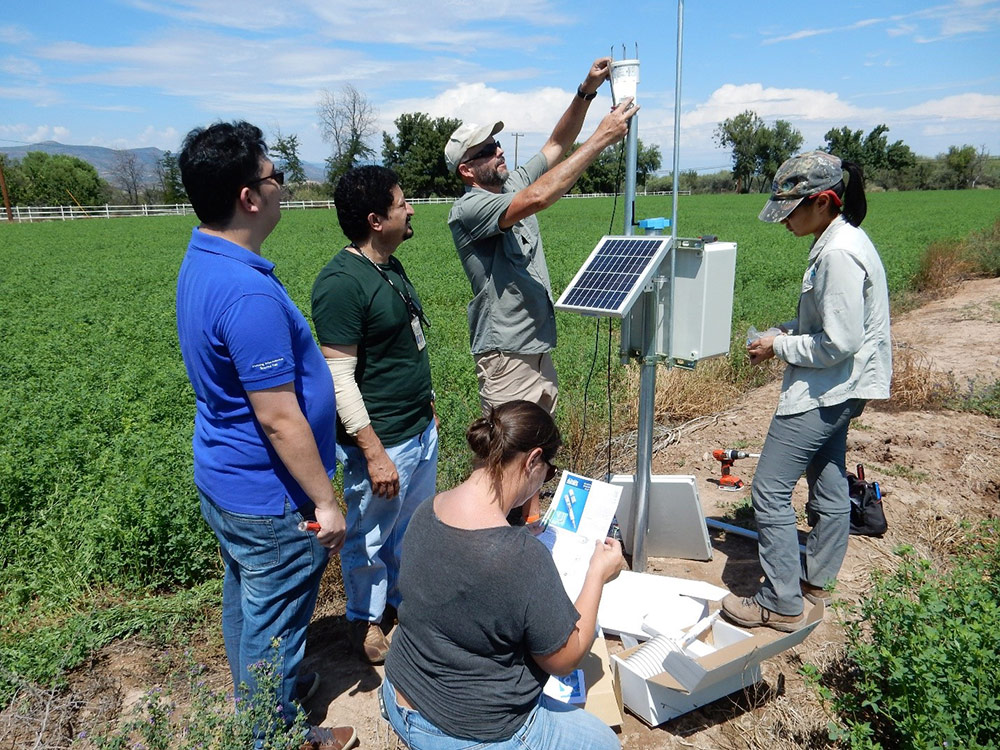Timberland, Patagonia, Intel and GE are showing how US companies can engage workers in their core missions
Corporate social responsibility in the US has traditionally been about philanthropy, with employees encouraged to do volunteering on company time to “give something back” to local communities. But the approach of engaging employees to promote a company’s corporate sustainability strategy is starting to gain ground as US companies see the benefits of tapping into a valuable and under-used resource.
The improvement has been from a low base. Ceres, a non-profit group that promotes sustainability leadership, surveyed 613 of the largest publicly traded US companies on the issue in 2014 and found that only 40% of them (248), involved employees in sustainability issues, up from 30% in 2012. Of these, only 37 companies, or 6%, are systematically embedding sustainability in company-wide employee engagement, including those at the executive level.
“Engaging employees in a corporate sustainability mission is essential for success, but employees are often an under-utilised resource in a company’s development and implementation of sustainability programs and strategies,” notes the report. “It is often employees on the shop floor, loading dock, laboratory or store front who see first-hand the immediate impacts a company’s operations can have on the environment and community — whether it’s trucks idling for hours or customers asking questions about the sustainability attributes of the product they are buying.”
The Ceres report says educating and inspiring employees to look for ways to improve operations, and providing them with the tools and opportunities to communicate their observations and ideas to management, is an essential first step.

Social media can be one of the most effective ways to generate employee engagement, according to a study by WeSpire, a technology company dedicated to employee engagement with sustainability. WeSpire worked with 30 companies over two years to discover how employee engagement spreads. By utilising social networks inside a company to spread sustainability messages, instead of the “death by Powerpoint lecture” approach, WeSpire discovered that employee engagement could grow exponentially.
Corporate social responsibility also complements another hot concept: purpose-driven work, which often ties into professional fulfilment for workers.
Susan Hunt Stevens, founder of WeSpire, says employees increasingly want jobs that have purpose and meaning. “They expect their employers to have sustainability programmes, and they expect their company to make the world a better place.” So which are leading US companies in employee engagement?
Patagonia
The founders of Patagonia, the 30-year-old manufacturer and seller of outdoor equipment and clothing (and lately food), found that by making safeguarding the environment a core goal, employee engagement was seamlessly embedded into the company’s fibre and embraced by employees.
This is helped by the fact that Patagonia’s mission statement (build the best product, cause no unnecessary harm and use business to inspire and implement solutions to the environmental crisis) attracts workers who are already committed to sustainable practices before they join the company, says Rick Ridgeway, vice-president of public engagement.
“We live and breathe that mission,” says Ridgeway. “People here use that mission to guide them in making short- and long-term decisions. So when employees come in, they are mission-aligned and deeply and fully engaged.”
Patagonia supports more than 800 NGOs around the world and employees are permitted to take up to two months’ paid leave to volunteer with them. The company also donates 1% of its annual sales to support environmental organisations.
Its recent expansion into food, under the brand extension Patagonia Provisions, offers products not just produced sustainably, but also regeneratively, meaning the farms practice ways to build soil health.
Patagonia plans to continue to grow each year in “a very organic way”, says Ridgeway, and as it grows and its influence increases, it expects to continue to look for new ways to implement its mission.

Timberland
US footwear and clothing company Timberland has found success by putting each department in charge of its sustainability goals. “The key way [to embed sustainability into corporate culture] is having different business units accountable for CSR goals,” says Atlanta McIlwraith, senior manager of community engagement. “We’ve been challenged by our president to map CSR to key business objectives. That has shifted my role from being an influencer to an adviser; when business units own goals, they are accountable for them.”
When recruiting workers, applicants frequently ask about Timberland’s Path of Service programme, which allows employees to participate in a community project for up to 40 paid hours a year, adds McIlwaith. This allows them to engage in whatever issues they feel most passionate about.
“We reward and recognise people who are champions of sustainability, people who introduce new ideas, saved energy and reward people who used all 40 volunteer hours,” she adds. “The Path of Service is a key way to empower them to make a difference; it definitely inspires them to find more ways to get engaged …. I think of all of the things we do as a company, the interest of people in doing meaningful work is having an impact.”
One early challenge was increasing global participation in sustainability from head office. “We had a team in New Hampshire responsible for influencing all over the world,” McIlwaith says. Now the company has appointed global stewards to drive service and CSR programmes wherever they are located and make the projects local.

Intel
Software giant Intel has a comprehensive employee engagement programme that focuses on three “buckets”: learn, act, share. The company provides resources to employees to help them integrate sustainability into business decision-making and links employee compensation to sustainability performance benchmarks. Through the Sustainability in Action Programme, employees who have proposals for worthy projects can apply for funding, says Suzanne Fallender, director of corporate responsibility.
In 2015 SIA projects included installing a solar-powered water pump at a national park in Sri Lanka and developing engineering kits to teach kids in Arizona about alternative energy. Intel also presents environmental excellence awards to employees who help reduce the company’s environmental impact.
Last year Intel saved about $43m from these projects, Fallender notes. Intel also helps employees learn firsthand how its technology can be applied to solve environmental problems. “We send teams overseas to install technology, to see it has positive social and environmental impact.” She says this also helps them get a better understanding of their company.
“We’re excited that we’re going through a big transformation, calling it a virtuous cycle of growth,” notes Fallender. “We’re working with employees to work through the internet of things, using technology for smart heating, lighting and air conditioning and sensors that turn lights on and off. It’s a huge part of the overall strategy of the company and we’re using it for our own sustainability practices.”
GE
GE has started incorporating employee sustainability-related training into situations relevant to people’s jobs. Training is offered on effectively integrating volunteerism into the employee experience, but other sessions focus on sustainability-related skills for specific sectors and work areas, a spokesman said. Among the hands-on experiences offered are “eco-treasure hunts”, where environmental, health and safety teams work with employees from other parts of GE to find energy- and water-efficiency opportunities at the company itself and at customer sites.
Ecomagination, GE’s business strategy to improve economic and environmental outcomes for customers and corporate operations, stresses brain-storming and innovation from employees while GE’s EcoAwards scheme recognises efforts that significantly reduce energy use, greenhouse gas (GHG) emissions, water use and materials consumption.
In 2015, GE opened up nominations for the EcoAwards program to functions across its value chain. From among 90-plus nominations, 18 teams were recognised and last year’s top winner was a digital industrialization initiative at a site in Greenville, South Carolina, where monitoring and controls on the heating and cooling system has generated more than $1 million in savings since 2013, according to the company.

Timberland Patagonia Intel GE Fossil Group Employee engagement

